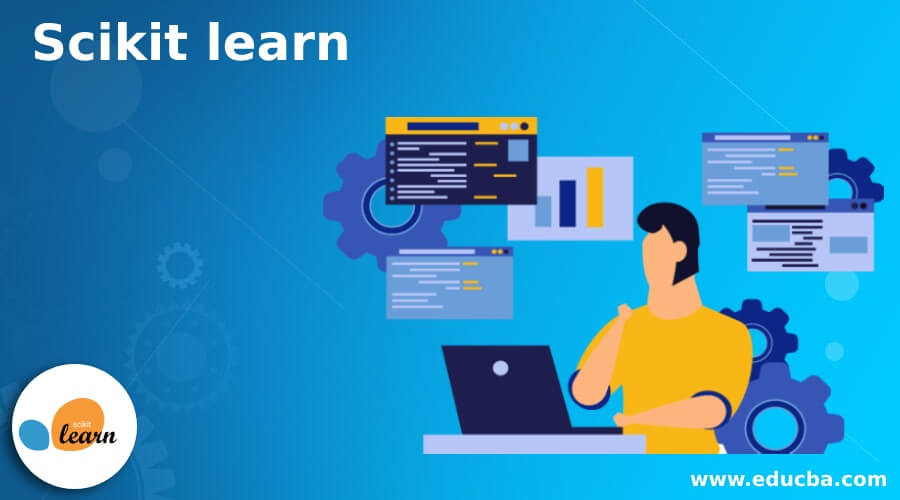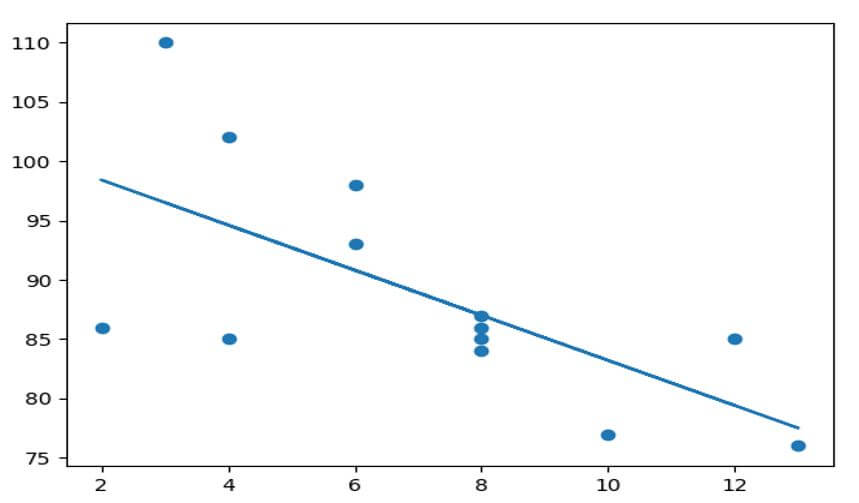Updated March 15, 2023

Introduction to Scikit learn
The following article provides an outline for Scikit learn. We know that scikit is widely used to implement machine learning in Python. It is a library that helps implement machine learning and statistics such as classification, regression, and Clustering with efficient tools and ways. Scikit is developed in Python and based on NumPy and SciPy. The most important key feature of scikit learn’s is to provide an efficient tool for the implementation of data mining as well as data analysis.
Key Takeaways
- It supports supervised learning algorithms such as linear regression, support vector, and decision tree.
- We can make the Clustering model per the requirement.
- It allows us to make the cross-validation to make the accuracy of prediction.
- Feature extraction and selection is one of the good features.
What is Scikit learn?
It is a very powerful library for AI. It determines effective AI and real demonstration devices, including grouping, relapse, bunching, and dimensionality decrease using interface consistency. These libraries are written in Python and built for NumPy, SciPy, and Matplotlib. Normally it is called Scikit learn, used to easily develop Machine Learning algorithms such as supervised and unsupervised learning algorithms and many more. With the help of it, we can solve statistical problems easily. Because of the Python library, we can see the chart of results.
Scikit learn Installation
Let’s see the installation process of scikit learn as follows:
Before Installation, we need to make sure some prerequisites are as follows:
- A version of Python must be greater than or equal to 3.5.
- A version of NumPy should be greater than or equal to 1.11.0.
- A version of Scipy should be greater than or equal to 0.17.0.
- A version of Joblib should be greater than or equal to 0.11.
- A version of Matplotlib should be greater than or equal to 1.5.1.
- A version of Pandas should be greater than or equal to 0.18.0.
Let’s see the installation steps as follows:
There are two ways to install scikit learn, such as using the pip command and using conda.
Let’s see the first method using the pip command:
It is very simple to install scikit using the pip command mentioned below.
Code:
pip install –U scikit-learnLet’s see the second method using conda as follows:
Conda also has a command we need to execute on the terminal, as the pip command below.
Code:
conda install scikit-learnIf we don’t have the above prerequisites, then we can install it with the help of pip and conda.
Scikit learn Machine Learning
We have different types of algorithms in machine learning such as Classification, Regression, Clustering, Dimensionality reduction, Model selection, and Preprocessing. So here we will see classification with Supervised learning as follows.
In Supervised learning again, we have different types of models, so let’s see Linear Models as follows:
We know that in linear regression, we have a linear model which fits the coefficient to reduce the addition of squares between the dataset and the predicted target. Mathematically we can solve the problem with the help of the below form.
Where,
- C – Is coefficient.
- X and Y are coordinators.
Example of Scikit learn
Given below is the example mentioned:
Code:
import matplotlib.pyplot as plt
from scipy import stats
x = [6,8,2,8,3,12,4,8,6,10,13,8,4]
y = [98,85,86,87,110,85,102,86,93,77,76,84,85]
slope, intercept, err = stats.linregress(x, y)
def m_func(x):
return slope * x + intercept
m_model = list(map(m_func, x))
plt.scatter(x, y)
plt.plot(x, m_model)
plt.show()Explanation:
- First, we need to import all required modules, such as Matplotlib and Scipy, as shown; after that, we create array representation for the x and y-axis. In the next step, we wrote code for Linear Regression and slope and intercepted as shown in the above code. Ultimately, we write the code to draw the scatter plot and linear regression line.
- Python has techniques for finding a connection between interest data and defining a boundary of direct relapse. We will tell you the best way to utilize these techniques instead of going through the mathematical equation. The result of the above implementation is shown in the below screenshot.
Output:
Scikit learn – Learning Model
In the learning model, we need to follow the different steps as follows:
But, first, we need to load the dataset, the dataset means data, and there are two main components as follows:
- Features: These are nothing but the variables of data and are also called predictors, attributes, and inputs).
- Response: Response is nothing but the target, output, and label, depending on the output variable. In the next step, we need to load the exemplar dataset. We can load an external dataset. We need to use the panda’s library to load easily and manipulate the dataset.
So we can use the below command.
Code:
pip install pandasIn step two, we need to split the dataset to determine the accuracy. After splitting the dataset, we need to train the model to make some predictions on the basis of the dataset.
FAQ
Given below are the FAQ mentioned:
Q1. Can we use Scikit learn for machine learning?
Answer:
Scikit learn is the most popular library for developing Python machine learning algorithms. Scikit contains various tools to implement the machine learning algorithm, such as classification, clustering, and regression.
Q2. Is there any difference between Scikit learn and TensorFlow?
Answer:
Yes, there is a difference between them; Basically, Scikit is to implement a broader range of different models, and TensorFlow is used for the neural networks.
Q3. Which is better, Scikit or TensorFlow?
Answer:
We know both modules are third-party and are good to use. But as compared to the scikit learn, Tensorflow is popular. Tensorflow is used for NN and Scikit basically for Machine learning.
Conclusion
In this article, we are trying to explore Scikit learn. In this article, we saw the basic ideas of Scikit learn and the uses and features of these Scikit learn. Another point from the article is how we can see the basic implementation of Scikit learn.
Recommended Articles
This is a guide to Scikit learn. Here we discuss the introduction, installation, scikit learn machine learning, learning model, and FAQ. You may also have a look at the following articles to learn more –


